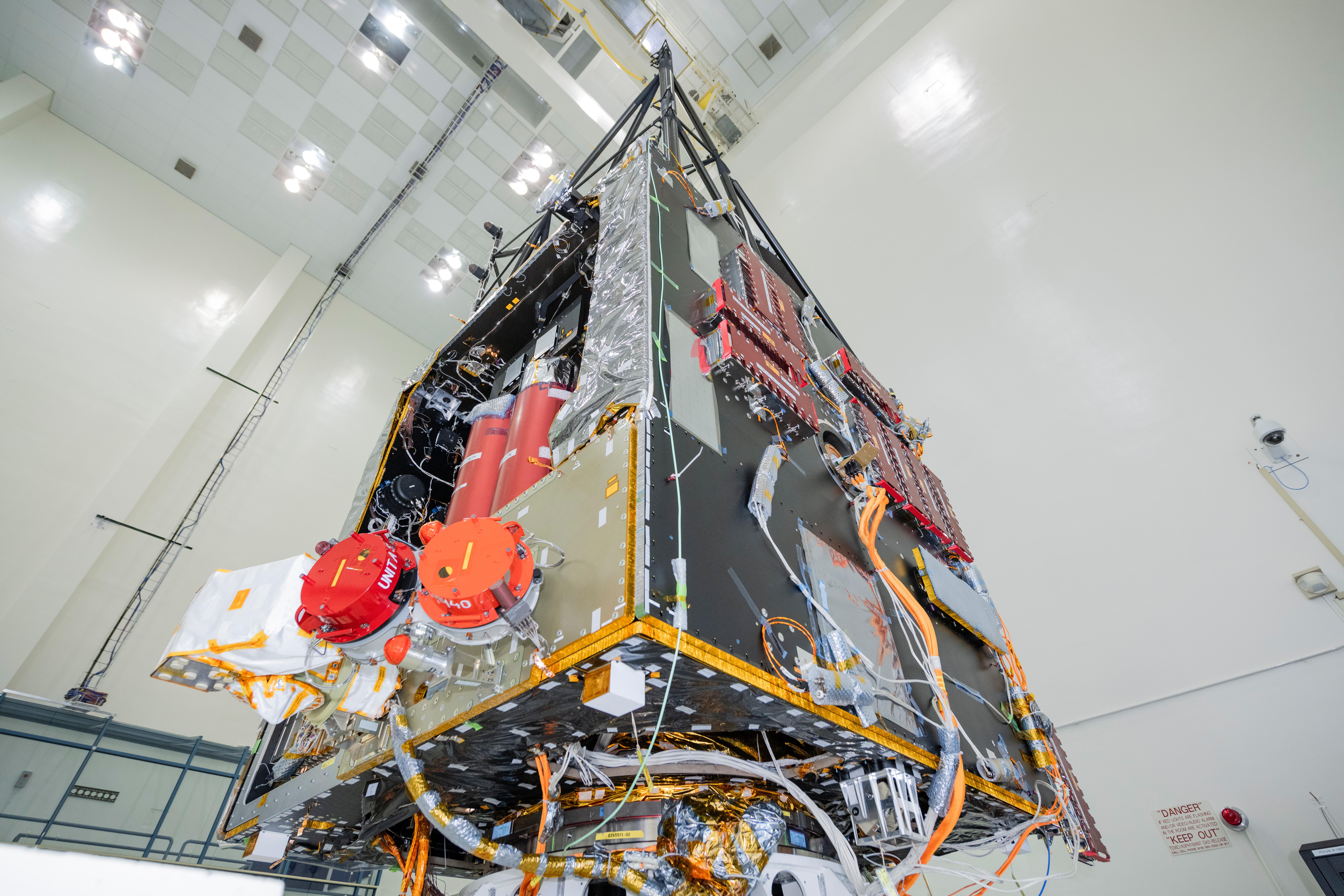
|
Psyche Thrusters: Integration Complete
- Click the image above for a larger view
- Full-Res JPEG (8256 x 5504) (5.5 MB)
- Full-Res TIFF (8256 x 5504) (100.5 MB)
Caption:
NASA's Psyche spacecraft is photographed in July 2021 during the mission's assembly, test, and launch operations phase at the agency's Jet Propulsion Laboratory in Southern California. Set to launch in August 2022, the spacecraft will use four Hall thrusters to propel itself to the metal-rich asteroid Psyche, using solar electric propulsion. Two thrusters are visible beneath red round protective covers, after being integrated into the spacecraft.
Solar arrays on the spacecraft will capture sunlight, which will be converted into electricity to power the Hall thrusters. The thrusters work by turning xenon gas, a neutral gas used in car headlights and plasma TVs, into xenon ions. As the xenon ions are accelerated out of the thruster, they create the thrust that will propel the spacecraft.
This will be the first use of Hall thrusters beyond lunar orbit, demonstrating that they could play a role in supporting future deep space missions.
Background Info:
Arizona State University in Tempe leads the Psyche mission. JPL is responsible for the mission's overall management, system engineering, integration and test, and mission operations. Maxar Technologies in Palo Alto, California, supplied the thrusters and built the high-power solar electric propulsion spacecraft chassis.
For more information about NASA's Psyche mission, go to: http://www.nasa.gov/psyche or https://psyche.asu.edu/
Cataloging Keywords:
| Name | Value | Additional Values |
|---|---|---|
| Target | 16 Psyche | |
| System | Main Belt | |
| Target Type | Asteroid | |
| Mission | Psyche | |
| Instrument Host | Psyche | |
| Host Type | Orbiter | |
| Instrument | ||
| Detector | ||
| Extra Keywords | Color | |
| Acquisition Date | ||
| Release Date | 2021-09-20 | |
| Date in Caption | ||
| Image Credit | NASA/JPL-Caltech | |
| Source | photojournal.jpl.nasa.gov/catalog/PIA24790 | |
| Identifier | PIA24790 | |
